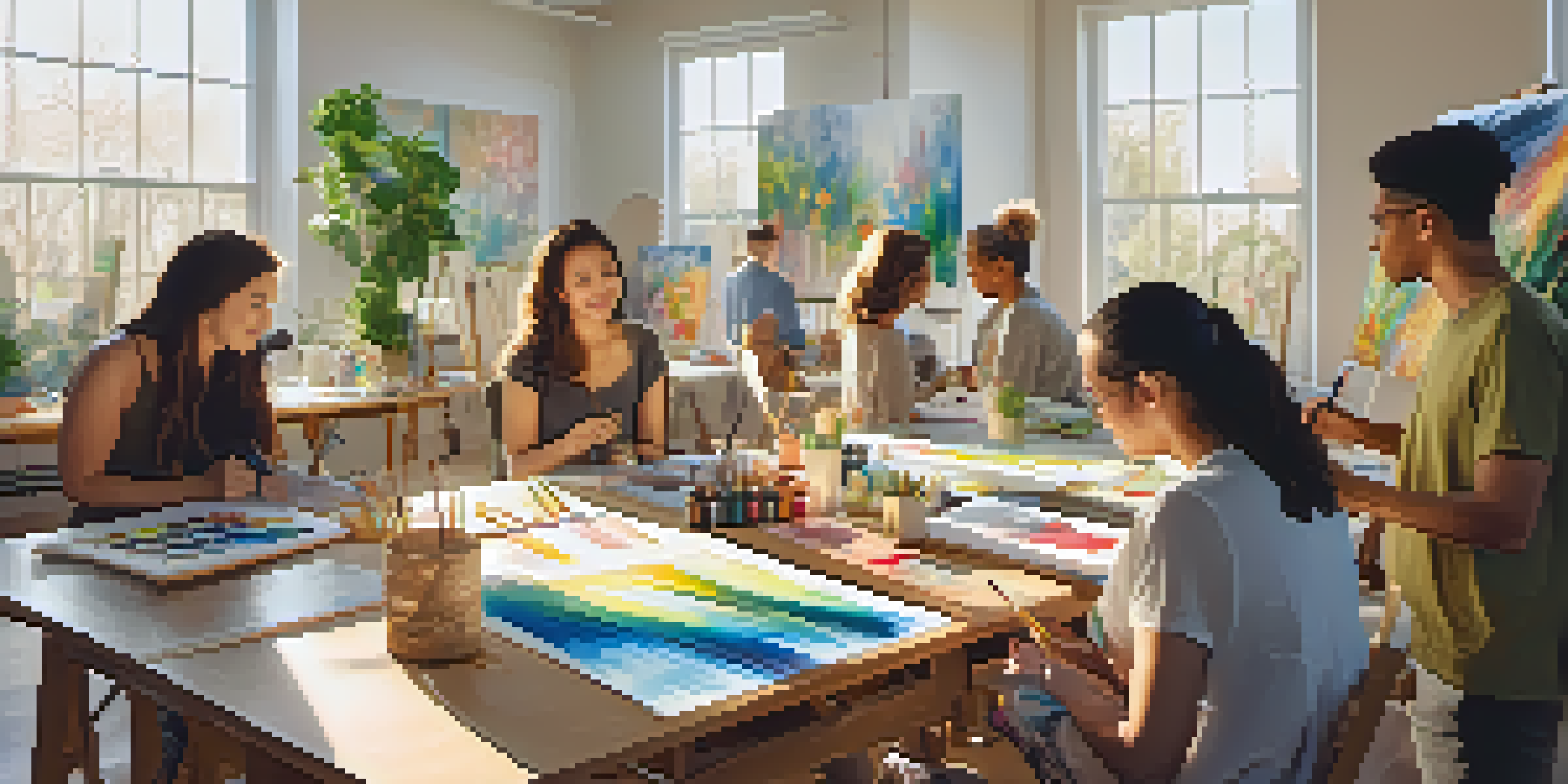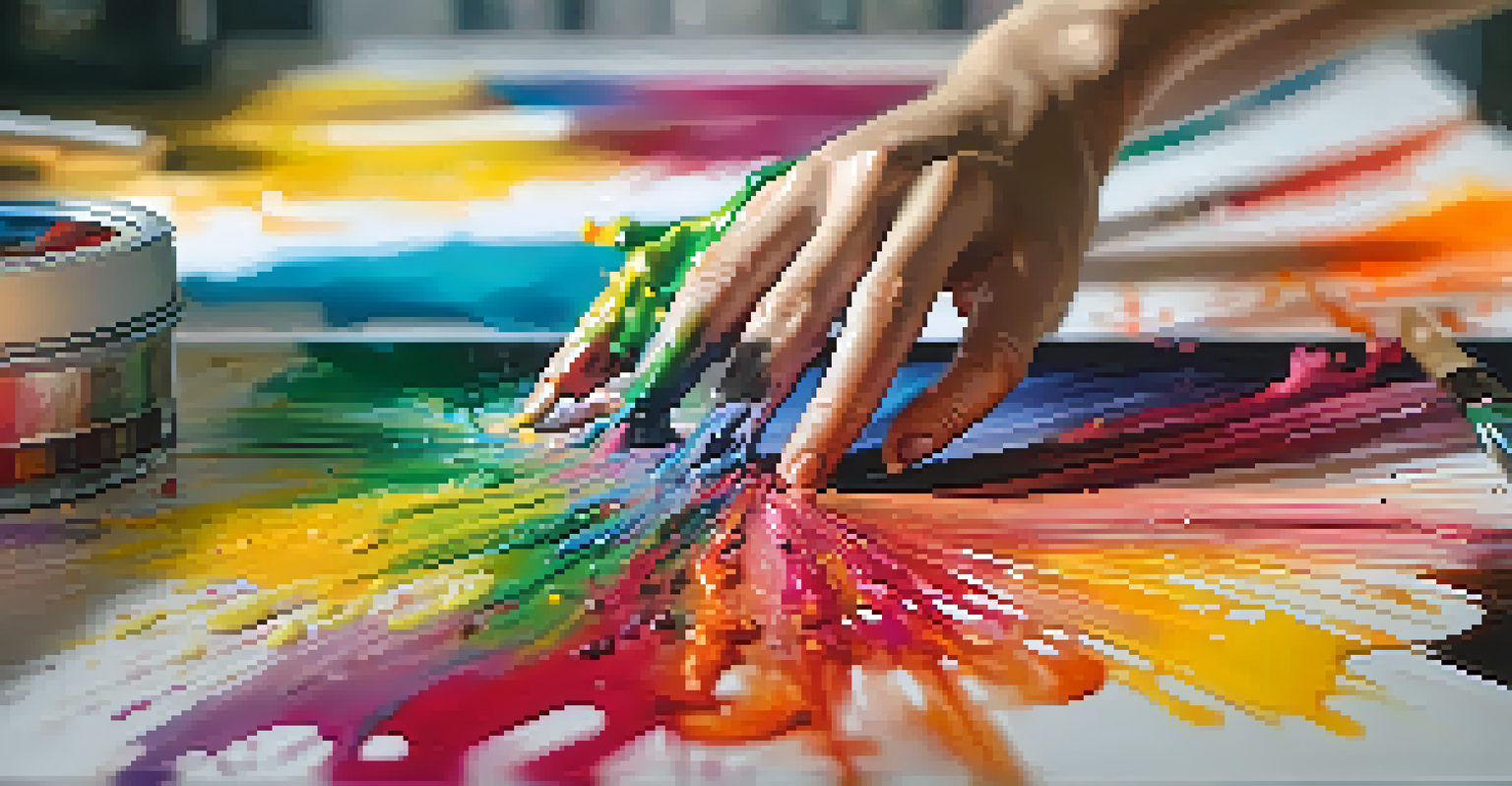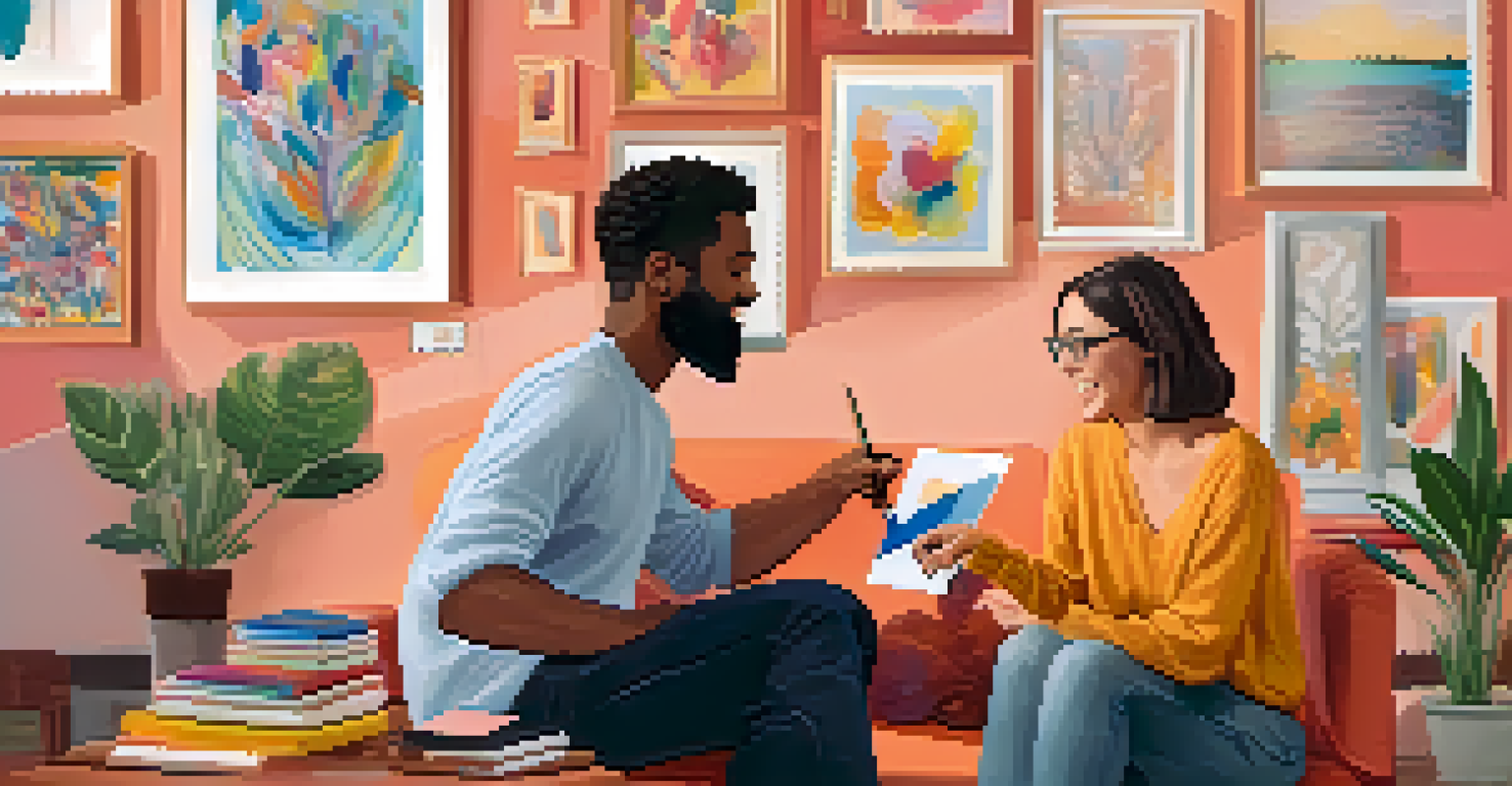Exploring Art Therapy's Effectiveness in Treating Depression

Understanding Art Therapy: What Is It?
Art therapy is a creative approach to healing that combines artistic expression with psychological support. It allows individuals to communicate their feelings and thoughts through various art forms, such as painting, drawing, and sculpture. By engaging in the creative process, participants can explore their emotions in a safe and supportive environment.
Art enables us to find ourselves and lose ourselves at the same time.
Unlike traditional talk therapy, art therapy provides a non-verbal outlet for those who may struggle to articulate their feelings. This can be particularly beneficial for individuals dealing with depression, as it encourages self-exploration and reflection. The act of creating art can also help alleviate some of the emotional burdens associated with depression.
Art therapy is facilitated by trained professionals who guide clients in using art as a means of healing. They help interpret the artwork and discuss its significance, which can lead to deeper insights and emotional breakthroughs. Ultimately, this therapy aims to foster personal growth and emotional resilience.
The Link Between Art Therapy and Depression
Depression can often leave individuals feeling isolated and disconnected from themselves and others. Art therapy serves as a bridge to reconnect with one's emotions and foster a sense of community. Through creative expression, individuals are given a voice to share their experiences and understand their feelings better.

Research has shown that engaging in creative activities can lead to improved mood and reduced symptoms of depression. The process of creating art can trigger the release of endorphins, the body's natural feel-good chemicals. This not only elevates mood but also provides a therapeutic distraction from negative thoughts.
Art Therapy: A Healing Approach
Art therapy combines creative expression with psychological support, allowing individuals to explore their emotions in a safe environment.
Moreover, art therapy encourages mindfulness—the practice of being present in the moment. By focusing on the creative process, individuals can gain relief from ruminating thoughts that often accompany depression. This mindfulness aspect can be incredibly grounding and restorative.
How Art Therapy Works: Techniques and Approaches
Art therapists use a variety of techniques to guide individuals in their creative journey. Common approaches include drawing, painting, collage-making, and even digital art. Each technique serves as a tool for self-expression and exploration, allowing individuals to convey their emotions visually.
The creation of something new is not accomplished by the intellect but by the play instinct acting from inner necessity.
One popular method is guided imagery, where therapists encourage clients to visualize a peaceful scene and then create art based on that imagery. This technique can foster relaxation and help individuals access deeper emotions. Other approaches may include thematic art projects that allow clients to explore specific issues or memories.
A key aspect of art therapy is the non-judgmental environment it fosters. Clients are encouraged to create freely without the pressure of producing 'perfect' art. This freedom can lead to greater self-acceptance and a sense of accomplishment, which are crucial for those battling depression.
Evidence Supporting Art Therapy in Treating Depression
Numerous studies have examined the effectiveness of art therapy in alleviating symptoms of depression. A significant body of research indicates that individuals who participate in art therapy report lower levels of depression and anxiety. For instance, a study found that participants experienced a notable decrease in depressive symptoms after just a few sessions of art therapy.
Moreover, meta-analyses of multiple studies suggest that art therapy can be as effective as traditional forms of therapy, such as cognitive-behavioral therapy, in treating depression. The findings highlight art therapy's potential as a complementary treatment option, especially for those who may not respond well to conventional therapies.
Effective for Depression Relief
Engaging in art therapy can lead to improved mood and reduced symptoms of depression by fostering mindfulness and emotional expression.
These positive outcomes underscore the importance of further integrating art therapy into mental health treatment plans. As more healthcare professionals recognize its benefits, art therapy could become a vital resource for individuals seeking alternative methods to manage their depression.
Real-Life Success Stories: Art Therapy in Action
Many individuals have found solace and healing through art therapy. For example, one participant shared how creating a mural helped her process grief and connect with her emotions after losing a loved one. She described how the colors and shapes she chose reflected her journey through sorrow and healing.
Another success story involved a young man who struggled with severe depression. Through art therapy, he discovered a passion for painting that allowed him to express feelings he had long suppressed. His artwork became a form of self-therapy, enabling him to confront his emotions and ultimately improve his mental health.
These personal anecdotes illustrate the transformative power of art therapy. They highlight how creative expression can lead to profound emotional breakthroughs and a renewed sense of hope.
Finding an Art Therapist: What to Look For
If you’re considering art therapy, finding the right therapist is crucial. Look for a licensed art therapist who has received training in both psychology and art. This unique combination of skills ensures that they can effectively guide you through the therapeutic process while understanding the psychological aspects of your experience.
It’s also essential to find someone whose approach resonates with you. Different therapists may use various techniques or styles, so don’t hesitate to ask about their methods. A good therapist will be open to discussing their approach and how it aligns with your personal goals.
Finding the Right Art Therapist
Choosing a licensed art therapist with the right experience and approach is crucial for effective treatment in managing depression.
Lastly, consider the therapist's experience with specific issues, such as depression. An experienced art therapist will better understand the nuances of working with individuals facing similar challenges, making your therapy more effective and tailored to your needs.
Conclusion: Embracing Art Therapy for Mental Wellness
Art therapy offers a unique and powerful approach to treating depression. By harnessing the creative process, individuals can explore their emotions, foster self-acceptance, and promote healing. It serves as a valuable complementary treatment that can enhance overall mental wellness.
As more people share their positive experiences with art therapy, it becomes increasingly clear that creativity can play a significant role in mental health. Whether you're an artist or have never picked up a paintbrush, engaging in art therapy can be a liberating and transformative experience.

Incorporating art therapy into your mental health journey may open doors to new understandings and emotional growth. If you or someone you know is struggling with depression, consider exploring the potential of art therapy as a helpful path toward healing.